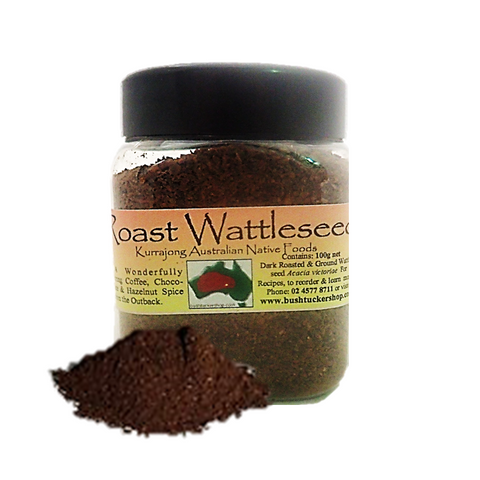
Wattleseed

 |
Natural HistoryOur Wattleseed Acacia victoriae or the Elegant Wattle is collected by Aboriginal People just as it has been for thousands of years. Today it is collected using sheets of cotton laid out under the trees, the pods are then dislodged using wadi sticks and the seed then separated and cleaned by hand using a variety of techniques. The Elegant Wattle is one of more than 1000 species of Wattle in Australia, many of which are edible but few of which have the intensity of flavour and large easily processed seed of the Elegant Wattle. As a food, Wattleseed has more protein, energy and trace elements than rice, pork & chicken. Research has been done to investigate the possibilities of Australian Wattleseed being used as a famine releif crop in African countries as it grows in deserts which typically have very poor soil, little or no water and produces abundant high quality food each year. |
Cultural HistoryCentral Australian Aboriginal people have relied on the Wattleseed as a highly nutritious staple for tens of thousands of years. They would collect the seeds and winnow them from their pods in Coolamon's. The seed woud then be ground on a mobile grindstone (like a mortar and pestle) into a paste and mixed with water to form small flat cakes. These were then baked in the coals of a fire and eaten or stored for later use. Anyone who has spend time in Australia's deserts will have seen these old grindstones out in the sand hills where Aboriginal women used to sit and prepare their meals. Today Wattleseed is less important as a primary food for Aboriginal Australians but is offering opportunity for desert tribes to become involved in growing this important food for use as a spice by people world wide. Several projects are underway whereby remote outback communities are establishing crops of bush foods such as Wattleseed providing employment and income in an environmentally friendly way. |
|



